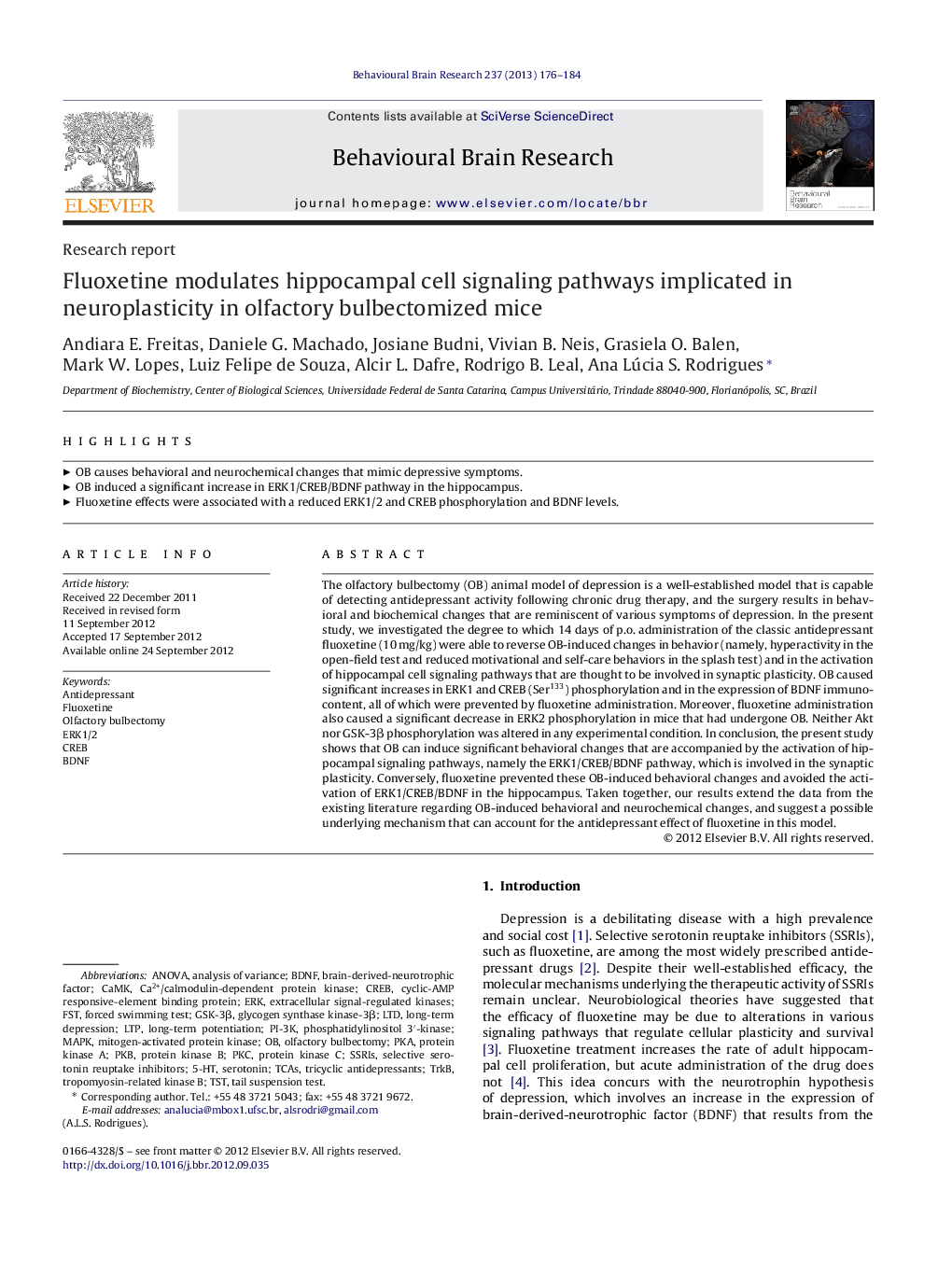| کد مقاله | کد نشریه | سال انتشار | مقاله انگلیسی | نسخه تمام متن |
|---|---|---|---|---|
| 6259338 | 1612995 | 2013 | 9 صفحه PDF | دانلود رایگان |
The olfactory bulbectomy (OB) animal model of depression is a well-established model that is capable of detecting antidepressant activity following chronic drug therapy, and the surgery results in behavioral and biochemical changes that are reminiscent of various symptoms of depression. In the present study, we investigated the degree to which 14 days of p.o. administration of the classic antidepressant fluoxetine (10 mg/kg) were able to reverse OB-induced changes in behavior (namely, hyperactivity in the open-field test and reduced motivational and self-care behaviors in the splash test) and in the activation of hippocampal cell signaling pathways that are thought to be involved in synaptic plasticity. OB caused significant increases in ERK1 and CREB (Ser133) phosphorylation and in the expression of BDNF immunocontent, all of which were prevented by fluoxetine administration. Moreover, fluoxetine administration also caused a significant decrease in ERK2 phosphorylation in mice that had undergone OB. Neither Akt nor GSK-3β phosphorylation was altered in any experimental condition. In conclusion, the present study shows that OB can induce significant behavioral changes that are accompanied by the activation of hippocampal signaling pathways, namely the ERK1/CREB/BDNF pathway, which is involved in the synaptic plasticity. Conversely, fluoxetine prevented these OB-induced behavioral changes and avoided the activation of ERK1/CREB/BDNF in the hippocampus. Taken together, our results extend the data from the existing literature regarding OB-induced behavioral and neurochemical changes, and suggest a possible underlying mechanism that can account for the antidepressant effect of fluoxetine in this model.
⺠OB causes behavioral and neurochemical changes that mimic depressive symptoms. ⺠OB induced a significant increase in ERK1/CREB/BDNF pathway in the hippocampus. ⺠Fluoxetine effects were associated with a reduced ERK1/2 and CREB phosphorylation and BDNF levels.
Journal: Behavioural Brain Research - Volume 237, 15 January 2013, Pages 176-184
